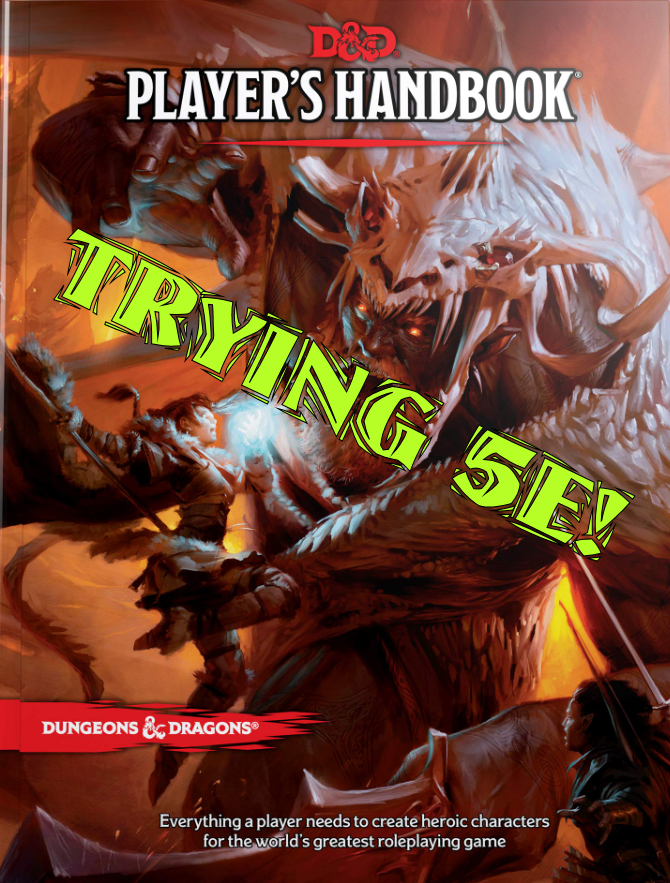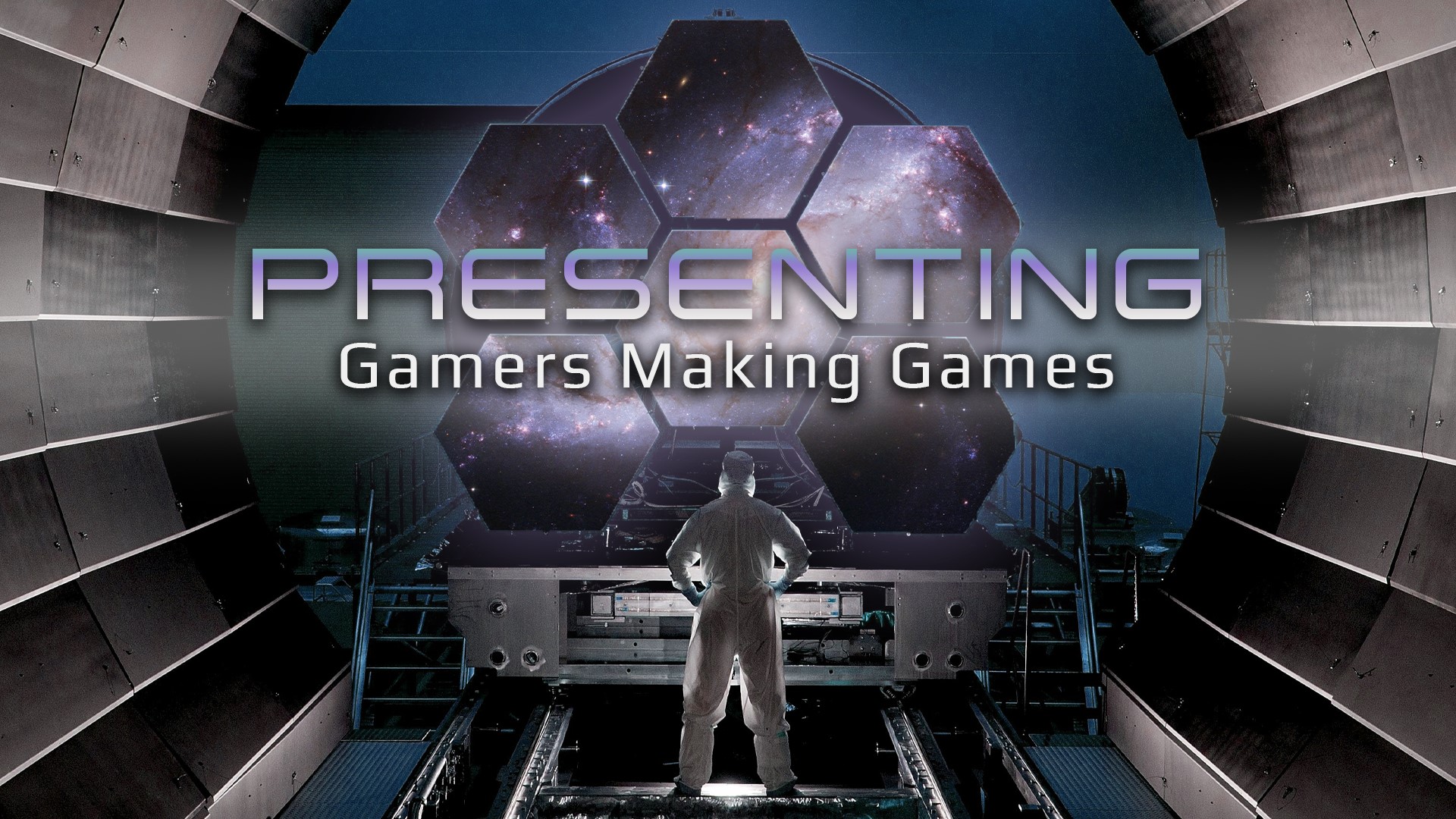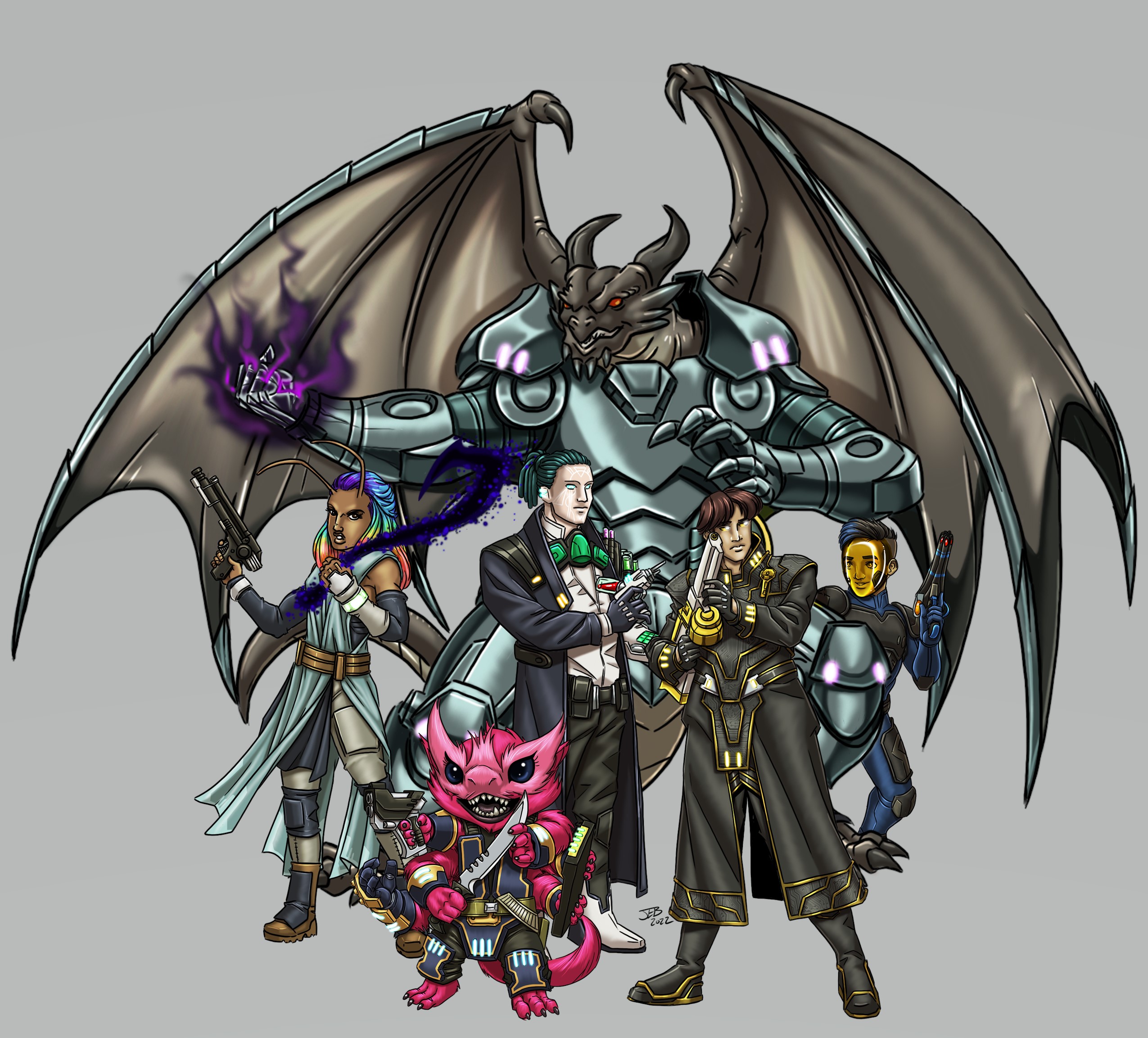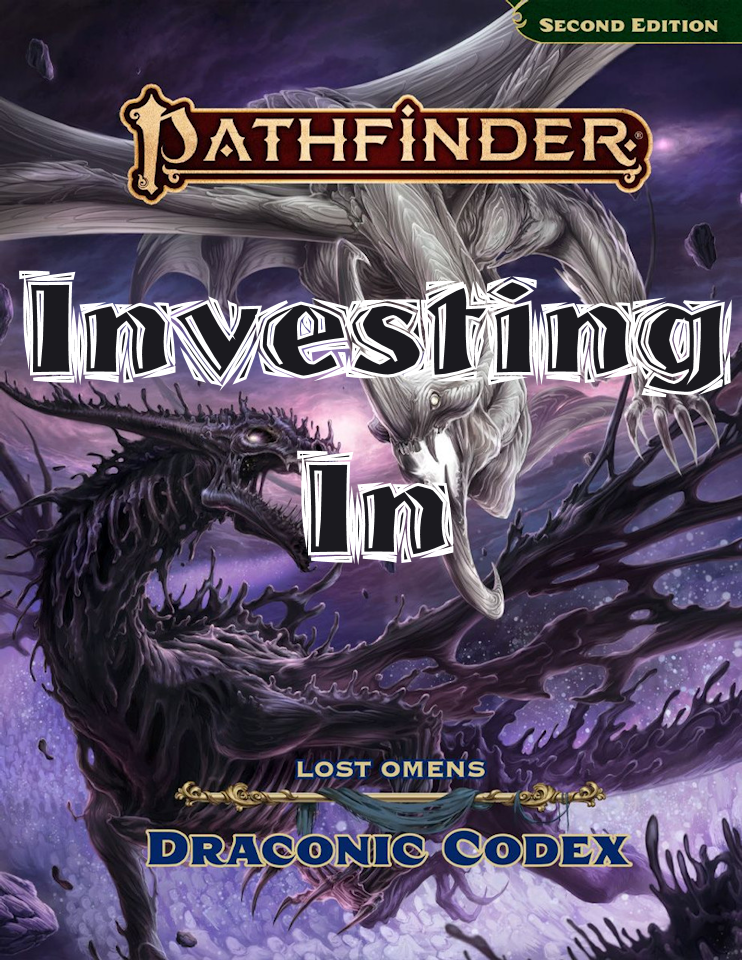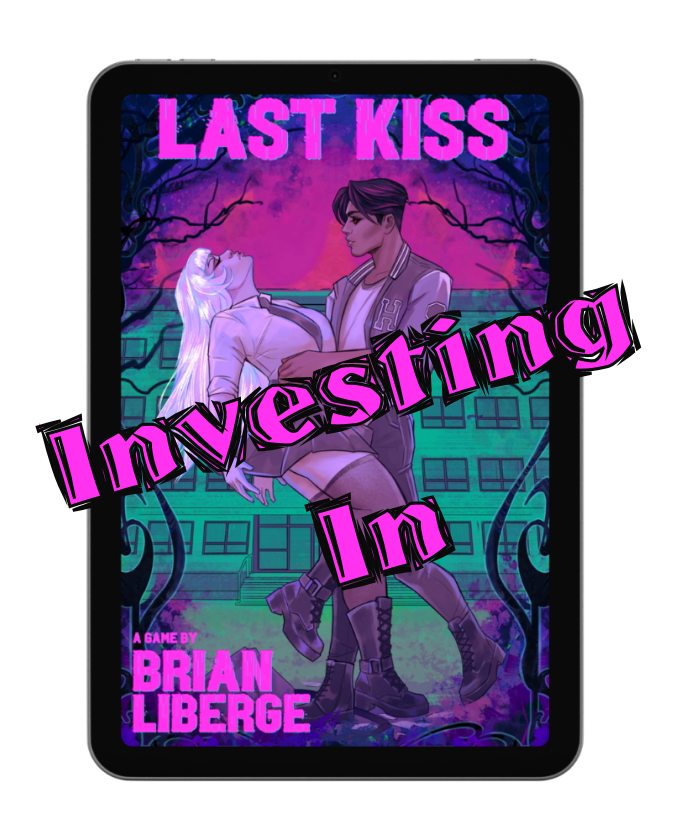What a slow couple of weeks, right? Hardly any roleplaying, tabletop, or gaming company news to talk about… I truly appreciate all those who’ve shared what they’ve found, shared their perspectives, done research on the topics of the OGL discussions, shared what they love about various games, and more. You don’t need me to break it all down again, especially as the conversation continues (as it should) or further news continues to break. I did however want to share how I invested some time in playing 5E over the last year and half, and my perspective comparison with Pathfinder2E!
Before I dig into that I will remind everyone we need to be welcoming to those who respectfully want to try the games we do love (like Pathfinder) as well as respect those still playing 5E, making campaigns/modules/content for it like various companies or content creators, or express interest in other games. I really appreciate Ginny Di’s recent video considering her connection to the game. I’m certain the community will continue to invest in her efforts because of her amazing creativity and passion.
Characters
One thing I appreciate is Pathfinder2E’s extensive list of classes, archetypes, and even options within them due to feats. The same can be said of ancestries, although 5E does have a number of races. 5th Edition is focused on the simpler, more streamlined. When I built a character for it I chose the warlock, my favorite class developed as part of 3rd Edition, and a Hexblood race, which in of itself allows for some customization with a hag or relative fey heritage. It worked perfectly for my child born of a Shadow/Lich ruler of an undead nation and a powerful fey, producing an ambassador for the well-intentioned nation who channeled some of their parent’s power as an undead warlock as the new version had just come out. While it’s relatively easy to produce your desired concept in 5E, the rest of the character and certainly the growth then felt limited. You only had a few abilities, very few spells, and there was little acquired during progress (i.e. while you leveled). It’s certainly easier to manage and maintain so while ultimately I could RP in either system to my heart’s content, I quickly was missing Pathfinder’s character options. However, with the agreement between your fellow players and GM/DM you can choose to make a feature different provided the mechanics still work the same. I don’t think many groups get to that point, rather seeking new abilities and options instead. Check out NoNat1’s video on some of the major differences where classes/ancestries are highlighted!
Combat
D&D 5th Edition has a simpler combat system then Pathfinder Second. I’d maybe curse a target, shoot eldritch blasts, and be done. I’d move here and there, throwing out a fun quip or two. Pathfinder2E is far tactical in positioning and strategic use of abilities. Indeed, its complexity is based on a growing number of abilities your character is capable of with some getting stronger purely from the advancement, which 5th Edition doesn’t see much of. Pushing, shoving, strategic placement, and wise use of that third action makes Pathfinder2E more lively. 5E still has frequent attacks of opportunity so I saw far less movement. I didn’t often see bonus actions used either; I of course used mine pretty frequently as a warlock however. Again, 5E would win for a simpler combat system overall but only because of stricter advancement and less options. That’s great for getting into the hobby or a very rules-light focus, but I was having a hard time selling myself on combat. This is especially true when the basics of roll a d20, add a modifier, and compare against armor class or the target rolls a saving throw are the same in either system. The numbers stay lower in 5E, which makes for easier math, but on the flip side combat can feel more random or harder to balance when the guarantee to hit or miss has a larger range. Pathfinder2E on the flip side can sometimes feel like you aren’t quite improving as much as you expected, but that’s because the challenges you’re encountering are meant to stay challenging. Fight some lowly bandits on the road at high level and you’ll feel quite powerful. I still had fun with 5E combat, but I felt that had a lot to do with the DM and the other players.
Magic
Ah yes, the magic. At face value, magic is magic and both systems are pretty clear in that based on your class you get access to specific spells. 5E favors a tag system where spells have the classes listed that get them, though various class options or even a race can get you some. In that way it can be more complex as every class is a little different, but that’s fun for differentiation. I adore the Pathfinder2E approach of having 4 spell lists and not going to lie, seeing OneD&D move in that direction was appreciated. I think it’s the right organizational step. The complex options get involved in Pathfinder based upon your focus abilities, all tied to the archetype or option within your class you’ve taken. Both systems have rituals and I enjoy that, probably moreso in 5E because I could cast ritualized spells for flavor and not impact my ability to help in combat. Of course, I wasn’t casting much variety in combat as a warlock. It was basically Hex every so often and Eldritch Curse all the time. I love writing my spell incantations but how often was I going to cast another spell? Now granted, if I’d played a druid, wizard, or sorcerer I’d have far more diversity and that’s still true. Wizard is certainly more complicated to play in 5E than Warlock for that reason, so even in 5E you can go for more complicated builds and you usually get versatility and flavor out of such. With either system it’s up to you the flavor you bring to ability use, including spellcasting.
Magic Items
That leads me to equipment and magic items. Magic items are certainly more rare in 5th Edition and I found the limited details, especially around cost, a challenge for both players and DMs. This makes a low magic campaign easier to manage, but I think part of the joy comes from the treasure discovery or magical item crafting. It was simply frustrating out of character to know what was even possible, what I should be able to afford. Many have spoken of the tighter math for Pathfinder2E, which makes sense considering its basically a mathematically composed programming language. Yeah, I know. I’m a nerd. Still, with the variety of categories in 5E from common to legendary, you can have some amazing and fun finds. Magic items feel more important that way. Pathfinder on the other hand, you know how much it costs and it’s easy to find the details especially if you quickly check Archives of Nethys. The guidelines on level, cost make it easy to balance availability but a plethora of magic items can make it difficult for players to remember all they have and GMs may forget as well, throwing off an encounter. I’ll say the balance of magic items in Pathfinder2E is far superior to Pathfinder1E, especially around the magic items you “had to have” for mathematical purposes. You’re still likely to pick up some magical weapons and armor, but in either system you’ll be looking to do so.
Storytelling
Ultimately you’re either playing a game for a bit of a challenge tactically, strategically or looking for fun with friends. Rule system aside, find out what you want from a game and what those you’re playing with are looking for. I could roleplay with either system. There’s grand stories to tell with either system. Having open conversations about retooling features or flavor of spells with your table makes it possible to achieve almost anything. What I think it can come down to, however, is that D&D 5th Edition makes it easier to initially understand and get into the game. I think we all can agree that’s important for new people to feel welcome and that they have a grasp of what’s going on. Maybe they don’t need all the options and more complex system of Pathfinder2E, and that’s okay. Tell your story however you want and can. However, I feel Pathfinder2E ultimately gives you a richer framework to work with that will likely make it easier on the DM. Wizards of the Coast owns the rights to many campaign worlds, including that of Krynn from Dragonlance, which will always hold a strong place in my heart. Many enjoy the Forgotten Realms or Eberron, but you can use those world with Pathfinder2E rules. My brother is for a game based entirely in Waterdeep. I absolutely adore Golarion and its Lost Omens lore. Can you play 5E with it? Yes. Paizo’s already giving you the ability to do that with Abomination Vaults for 5E. Thus, frankly it’s not about the rules system. It’s about you and your friends having a good time that controls the story you make and tell.
Well I said a lot maybe without saying enough, or maybe too much, or what you’ve already read. I’d suggest you try many other systems too like 5E, like Wanderhome, like Avatar the Last Airbender’s new rpg, like Ace Adventure, like Bite Marks, Monster of the Week, Urban Shadows, and other Powered by the Apocalypse games, like World of Darkness. And yeah I’m linking my old articles, but I’m hoping they’re helpful. There’s many great games out there! Maybe try some Essence20 eh? I know a guy (it’s Ryan). I gotta try some myself this year! Support the companies you like and that support the community. Do not condemn those that are working with the frameworks that support their people, let alone we should not come down on every Hasbro or WotC employee just because of OGL conversations. I love Paizo and Pathfinder, but I also live in RI and know many fine people at Hasbro.
I’m inspired by the OpenRPG plans and I love my Pathfinder2E games. Thus, I do suggest you invest in Pathfinder2E. I hope however that some of my experience gives you guidance on why you might want to try Pathfinder Second Edition! The beginner box is a great way to start and you can learn about it from the unboxing video linked above! And if you’re looking to move your character over to Pathfinder2E from 5th Edition, submit your build to Loren so she can help you with the return of Legend Lore! See the tweet below!
Leaving #dnd5e for #pathfinder2e, but don't want to abandon your #dnd character? Good news! Legend Lore will be back soon, and @lorendovah wants to kick off the podcast's new era with a guide to converting #5e characters to #PF2.
Reply with your build to help her help you. pic.twitter.com/OMbb4N5zcv— Know Direction #orc #opengaming (@knowdirection) January 17, 2023
Investing In:
I wasn’t quite sure what to name my article series when I first started but the idea of showcasing or discussing things that make me excited, that I find new and interesting, or maybe I’m otherwise passionate about seemed to fit with the idea of Investing In something like the Pathfinder 2E mechanic. To use some magic items you have to give that little bit of yourself, which helps make these things even better. I like the metaphor of the community growing and being strengthened in the same way!
I also want to hear what you’re Investing In! Leave me a comment below about what games, modules, systems, products, people, live streams, etc you enjoy! You can also hit me up on social media as silentinfinity. I want to hear what excites you and what you’re passionate about. There’s so much wonderful content, people, groups (I could go on) in this community of ours that the more we invest in and share, the better it becomes!
Sources
Banner – 5th Edition Player’s Handbook, Wizards of the Coast, Hasbro

